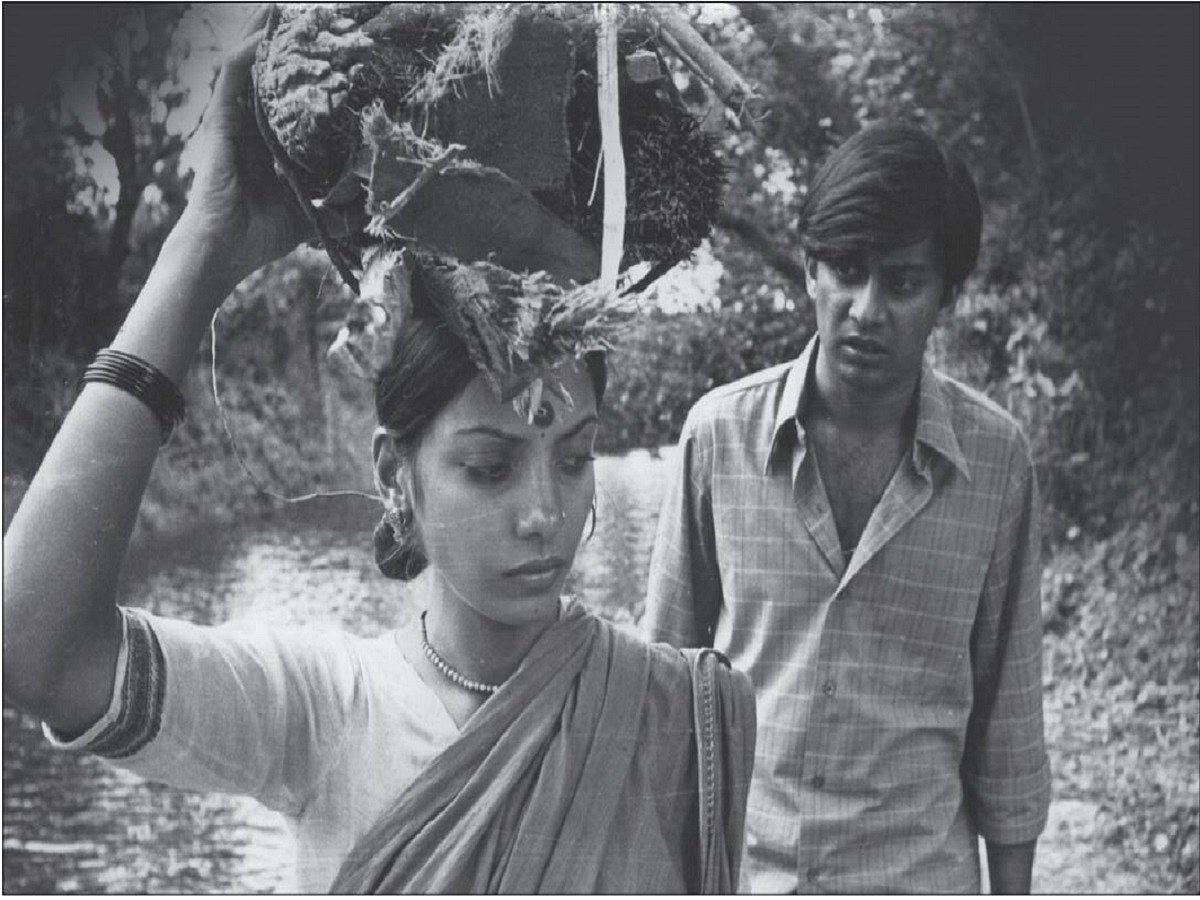How much have feudalism and oppression of women changed since 1974 when ‘Ankur’ was made ?
Nothing seems to have changed since Shyam Benegal made Ankur in 1974, writes Subhas K Jha

At a time when brutal oppression is a way of life, when a girl gets molested on the street by a mob while civilised society watches in mute submission, it’s befitting to remember the celebrated finale in Ankur when after watching a mute-and-deaf peasant being whipped by a bratty Zamindar’s son, a little boy picks up a stone and hurls it at the glass windowpane of the oppressor.
It was a decisive moment when Hindi cinema resolved to turn revolutionary. Shabana Azmi,Sadhu Meher and Anant Nag, all new to the movie camera, were brought in to play out a triangular drama where the peasantry gets the kind of sensitive heartbreaking treatment that Satyajit Ray and Bimal Roy had earlier attempted in Pather Panchali and Do Bigha Zameen. The New Wave in Hindi cinema brought its own surge of new hope. Shyam Benegal could be justly called the father of New Wave Cinema in the 1970s. Prolific in his output, Shyam Babu, as he is affectionately and reverently known, hasn’t stopped making films with a social relevance that touches a deep chord in the human heart.
Ankur, his directorial debut, remains to this day his most searing indictment of oppression set within an extended feudal system in Andhra Pradesh, where the Zamindari system is gone. Zamindars are no more. Though abolished, the feudal mindset lives on.Carrying forward the tradition of cinema set in the poverty of the Indian heartland , Ankur took forward the feudal fable of Satyajit Ray’s Pather Panchali and Bimal Roy’s Do Bigha Zameen, though the language used to convey the sharp cutting contours of socio-economic oppression in Ankur are far removed from the way Ray and Roy envisaged it. Benegal turns the parable on poverty and subjugation into a sexually charged tale of lust, jealousy, insecurity and brutality in a village of Hyderabad. The camera (Govind Nihalani) follows the rituals of the Andhra village closely. Ankur is rooted to the Andhra soil. That is why initially Benegal wanted Waheeda Rehman to play Laxmi. The fact that the role finally went to Shabana Azmi is providential.
The story of Laxmi (Shabana Azmi)’s incredibly doughty efforts to look after her deaf-and-mute husband Kishtayya (Sadhu Meher) and the sexual dynamics that evolve as she gets intimate with her employer, the Zamindar’s educated son Surya(Anant Nag) are woven into the rites and wrongs of the small Andhra village. We see the principal plot, the seduction subjugation and exploitation of Laxmi by Surya,in relation to other happenings in the village. For example, a village woman is dragged to the panchayat for refusing to stay with her husband. When reminded that the husband had provided her with ample amenities and food the woman retorts, “Bhookh sirf pet ki nahin hoti hai”, drawing attention to her husband’s impotency.
In contrast Laxmi’s deaf-and-mute husband is perfectly capable of providing her with every kind of sustenance. Yet after being humiliated by Surya, Kishtayya leaves the village and his wife to fend for herself.The coast is cleared for an adulterous liaison between Laxmi and Surya. Interestingly there’s no coercion involved.Once Laxmi is rendered spouse less she knows her best option is to become the Zamindar’s mistress.

The dynamics in the cosy village home of the Zamindar change radically when Surya’s child-bride Saru (Priya Tendulkar) arrives and takes charge. Laxmi is first marginalised in the household and then banished with the approval of Surya who is a curious blend of masculine arrogance and spousal cowardice.
Anand Nag and Sadhu Meher turn in perfectly pitched performances as the Zamindar and the husband. Sadhu so effortlessly empathetic as the husband, won the National award for Best Actor. But the film finally belongs to Shabana Azmi. From the protective wife of an economically and physically weak husband to a deserted woman who sleeps with her employer for self-preservation to finally the oppressed under-dog whose voice rises in protest against gender tyranny and social inequality, Shabana owns the role of Laxmi.
No wonder Satyajit Ray had commented, “In two high-pitched scenes she pulls out all stops and firmly establishes herself as one of our finest dramatic actresses.” The two scenes Ray refers to both occur in the film’s culminating portions when Laxmi’s husband walks back into her life. Shabana’s breakdown on seeing him is gut-wrenching. So is her final rant of protest against the powerful man who slept with her and beat up her husband out of guilt and fear.
Outwardly Ankur is an immensely tranquil film. But the green stretches of land are barely able to hide the vast acres of pain and angst of a society built on inequality and injustice. Nothing has changed over the years. The seedling (Ankur) of social protest is still to grow into a powerful collective protest. Equality on every level is still a dream. But yes, the seedling of cinematic excellence planted by Benegal has grown into a flourishing tree.
Follow us on: Facebook, Twitter, Google News, Instagram
Join our official telegram channel (@nationalherald) and stay updated with the latest headlines